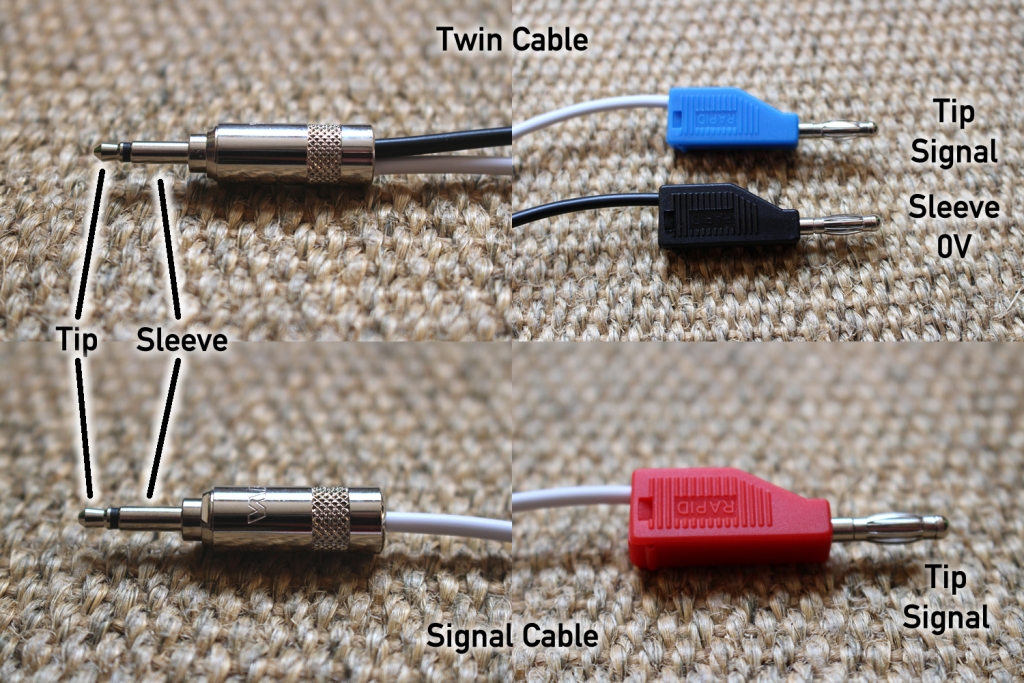4mm banana cables are a joy to use – reliable, stackable, colourful, etc. – but people can be scared off them as they are quite niche compared with jack based systems. The word ‘grounding’ is rolled out with a sense of mysterious confusion..
There are two aspects to ‘grounding’ – one is to provide a common reference between systems, while the other is connection to mains earth for electrical safety. This section focuses on the common 0V reference (‘ground’) – see also the section on Understanding signals & voltages for details of the system power.
With jack-to-jack there is a common 0V on the jack sleeves, but what do we do with bananas that only have a single connector? In most instances simple interface cables can be used:
The first connection is made with the twin cable – the black cable is connected to the 0V socket on the rear of the case/frame, while the white cable carries the signal. Once this initial 0V connection has been established, further connections to the same piece of equipment can simply be made with single signal cables. If you want to bring in another piece of equipment you should use a second twin cable.
Interface cables can be used for input or output. You should have in mind the expected voltage range/behaviour as signals may need attenuation/amplification/offset.
I said ‘in most instances’ above – the interface cable approach generally works very well but is not electrically ideal. Really you want all equipment 0Vs to be joined with as low a resistance as possible, but using a connection via a jack socket is never going to be the best way to achieve this.
The banana 0V socket provide a convenient & reasonably low resistance connection point – this can be joined to other banana systems for example, which should usually feature a 0V socket on the case.
In my own setups I have all reds & blues mounted in Frames, each of which has their 0V sockets connected with banana cables allowing free patching within the system. External sequencers etc. are then connected with the interface cable approach mentioned above.

